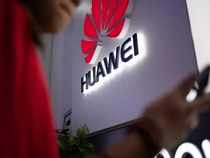
SEOUL: Samsung Electronics is likely to say second-quarter profit more than halved when it reports preliminary earnings on Friday, data showed, as a drop in memory chip shipments to China’s embattled Huaweiexacerbated a price-squeezing supply glut.
The quarterly result would be the South Korean firm’s lowest in nearly three years, with the prospect of an earnings recovery still some quarters away as a period of oversupply continues unabated amid a broader slowdown in tech markets, analysts said.
The world’s biggest supplier of DRAM and NAND memory chips is also the world’s largest maker of smartphones, a market where chip client Huawei is second place. Companies worldwide have been forced to restrict business with Huawei to comply with US trade sanctions on a company Washington deems a security risk.
“How much Huawei will use chips ahead is definitely a swing factor in prices,” said analyst Jay Kim at Sangsangin Investment & Securities. “When there’s not many players that can buy chips instead of Huawei, then Samsung has to cut prices to sell them.”
Though chip earnings took a hit from reduced Huawei custom, Samsung Electronics Co Ltd’s smartphone business is likely to benefit from a drop of as much as 40 per cent in international sales of Huawei handsets. So far, however, Huawei Technologies Co Ltd has strong enough support at home in the world’s largest smartphone market to retain its global ranking.
Even so, selling chips brings in most of Samsung’s profit – over two-thirds – and a saturated smartphone market and falling demand from data centres have pulled prices down.
Prices for DRAM chips, which provide devices with temporary workspaces and allow them to multi-task, are unlikely to rebound in the second half of the year, said analyst Avril Wu at tech researcher TrendForce. Moreover, she said, it will be difficult for Samsung to clear its inventory until the first half of 2020.
TrendForce estimates DRAM prices in the three months through June fell 25 per cent. Last month, it lowered its forecast for the July-September quarter to a decline of 15 per cent to 20 per cent, from 10 per cent.
On Friday, Samsung is likely to flag a 60 per cent decline in April-June operating profit at 6 trillion won ($5.14 billion), according to Refinitiv SmartEstimate, which is based on the estimates of 29 analysts, with the estimates of analysts historically more accurate given greater weighting.
The tech firm booked 14.9 trillion won in the same period a year earlier. It is due to publish final second-quarter figures later this month. Its shares rose 5.3 per cent over the three months.
TRADE TROUBLES
Huawei is the world’s largest maker of telecommunications equipment, and just as the impact of its US predicament ripples through both the chip and smartphone sectors, tech firms such as Samsung have also become collateral damage in a broader Sino-US trade war punctuated by tit-for-tat import tariffs.
Samsung could also be on the receiving end of Japanese curbs on exports to South Koreaof high-tech materials used in chips and smartphones – a retaliatory measure to South Korean wartime compensation claims that Japan says were resolved decades ago.
Still, in the long run, the good news for Samsung could lie in Huawei’s troubles. If US sanctions remain, Samsung could sell 37 million more smartphones annually, said senior analyst Song Myung-sup at HI Investment & Securities. Moreover, it would likely install its own chips in those handsets, Song said.
Last year, Samsung shipped 292 million handsets to Huawei’s 205 million, showed data from market tracker Counterpoint.
In April, Samsung said it expected both smartphone and chip sales to pick up in the second half of the year, while US chip rival Micron Technology Inc likewise said demand would recover later this year.
“Earnings recovery for memory chipmakers will come, but it won’t be fast and it won’t be a big leap,” Song said.
[“source=economictimes.indiatimes.”]
| M | T | W | T | F | S | S |
|---|---|---|---|---|---|---|
| 1 | 2 | 3 | 4 | 5 | 6 | |
| 7 | 8 | 9 | 10 | 11 | 12 | 13 |
| 14 | 15 | 16 | 17 | 18 | 19 | 20 |
| 21 | 22 | 23 | 24 | 25 | 26 | 27 |
| 28 | 29 | 30 | 31 | |||



























